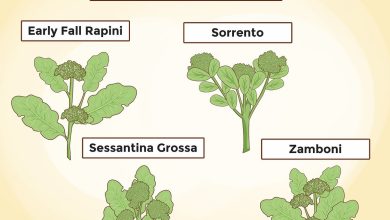How to Fertilize Avocados: [Methods, Dates and Components to Use]
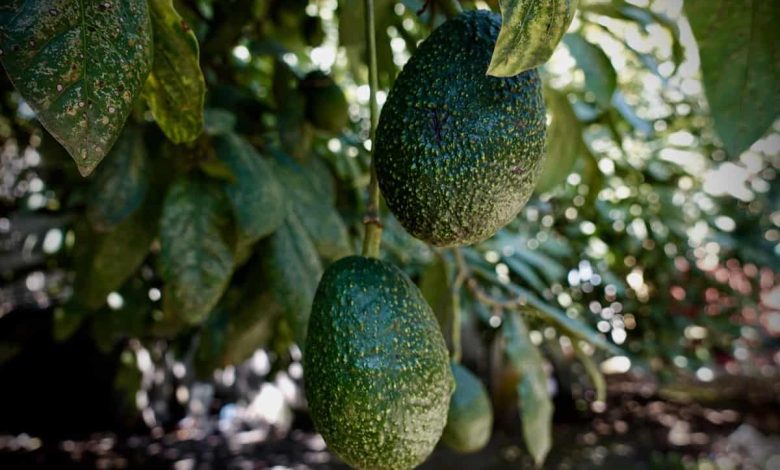
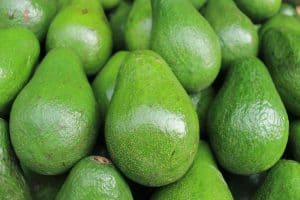 The avocado is a highly appreciated fruit in the kitchen and also in natural cosmetics, as long as they are of the best quality.
The avocado is a highly appreciated fruit in the kitchen and also in natural cosmetics, as long as they are of the best quality.
To obtain the best results in the avocado harvest, it is important to know which is the most efficient fertilization method.
This leafy tropical tree has the goodness to adapt to various types of terrain, but it is not so open with its nutritional needs.
To know more:
Why pay avocado?
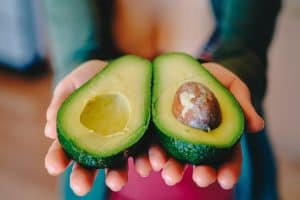 The avocado tree has a leafy and very green texture. For this to be maintained, it needs good nutrients.
The avocado tree has a leafy and very green texture. For this to be maintained, it needs good nutrients.
In addition to that, its production is usually very large and the fruits tend to be heavy, both because of the pulp and the bone that accompanies it.
All this demands that the structure must have strength and sanity to face the task that lies ahead.
That is why a good fertilizer is used, since it is from it that they will be able to extract the nutrients they need and stay in operation.
When to pay an avocado?
The nutrients that avocados require (see below, which are P, K, S, Mg, and half of N) will be put in after the peak harvest, which roughly corresponds to the rainy season. The other half of the nitrogen, six months later.
It is also advisable to carry out a foliar analysis to adjust maintenance fertilization recommendations.
To correct micronutrient deficiencies, applications of compound foliar fertilizers or in the form of chelates will be carried out based on the foliar analysis that has been made.
Source: https://repositorio.iniap.gob.ec/bitstream/41000/4048/1/iniapscga5.pdf
What does the avocado tree need?
The nutritional needs of the avocado are oriented to nitrogen, phosphorus and potassium in greater demand.
After them are other elements of the group of macronutrients such as calcium, magnesium, sulfur, boron and zinc.
For micronutrients, you’ll need to have the correct proportions of iron, copper, manganese, and molybdenum.
Avocado grows well in deep, sandy loam soils.
It is very sensitive to root suffocation due to lack of oxygen, which makes the roots stop growing, for this reason it should not be planted in clay soils with hardened layers.
The adequate depth is 1.0 to 1.2 m with organic matter content.
Soil salinity in avocado planting
Salinity is measured through the electrical conductivity in the soil extract.
The avocado crop resists levels between 2 and 3 millimeters/cm. Therefore, higher levels have toxic effects on the plant, causing burns on the points and edges of the leaves. In addition to intense defoliation.
Soil pH Range
The pH range should be between 5 and 7.5. If it is higher than neutral, symptoms of iron chlorosis can be observed and the availability of microelements, such as zinc, manganese and boron, also decreases.
What are the main components of the avocado fertilizer?
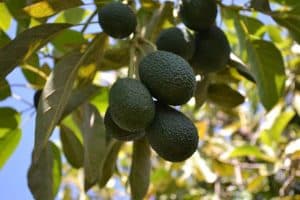 The main components that a fertilizer must contain are oriented to the proportions of macronutrients and micronutrients according to the species.
The main components that a fertilizer must contain are oriented to the proportions of macronutrients and micronutrients according to the species.
However, the exact conditions for this to be of real benefit will be based on foliar studies of each plant and of the soil in general.
From there it will be obtained with certainty if the levels of boron, for example, are not appropriate to achieve the best results.
What deficiencies can avocado have and how to detect them?
When an avocado tree does not have the nutrients mentioned in previous sections or does not have adequate levels, it suffers from symptoms.
These are easy to define by simple observation. The problem is that there are occasions where they generate confusion with some diseases.
But in any case, it is worth having notes about the possible negative effects that the lack of these components causes:
- Nitrogen: Yellow leaves, slow tree growth, burnt-looking leaf tips.
- Phosphorus: poorly developed roots and fruits, slow maturation,weak stem.
- Potassium: weak stem that causes the tree to lean, wrinkled fruits,burned leaves.
- Calcium: very dark green leaves, weak stem.
- Magnesium: new leaves with greatly reduced sizes, old ones can crack or fall off the tree.
- Boro: buds without color and fruits with holes, similar to a cork.
- Zinc: few crops and new leaves that do not grow or are reduced in size.
- Copper: lack of flavor in the fruits.
- Iron: chlorosis in the leaves and malformations bending their tips upwards.
- Manganese: plant with thin branches and leaves that are noticeable with chlorosis.
- Molybdenum: the tree is not leafy and the leaves turn yellow.
According to this study in the scientific journal Agricultural Sciences:
The application of organic fertilizers such as compost and earthworm humus leachate partially supplies the nutritional demand of the avocado crop, but should be considered as a complement to a more holistic management of the production system, as well as as amendments that improve the fertility of the soil that will allow in a short to medium term to improve the productive characteristics.
Regarding the yield of the avocado crop, we can deduce that the application of organic fertilizers does not act immediately in the system in the productive aspect, but rather it generates the necessary conditions to improve productivity in later cycles, as was appreciated in the development superficial radicular evaluated, the CEC and the correlation with the absorption of Cu, Zn and B.
In superficial root development, a favorable response was observed in the treatments in which organic fertilizers were part, so it can be concluded that there is an effect on this variable analyzed.
Said root development will allow a better use of soil nutrients, higher yield and better health with respect to root disease problems.
To facilitate the germination of the seeds, it is advisable to sow the avocado in seedlings and later transplant them into plastic bags.
For the nursery, beds 20 cm high and 1 meter wide are prepared. As well as 3 meters long (according to the needs we have for production).
The substrate to be used can be pomina or other loose materials. It is recommended to disinfect this floor with Dazomet in doses of 40 grams per square meter.
Once the avocado seeds germinate, we can transplant them into plastic bags or pots. These will be filled with a mixed substrate with a 2:1:1 ratio of soil, pomina and earthworm humus, respectively.
How to make a compost compound for avocados step by step?
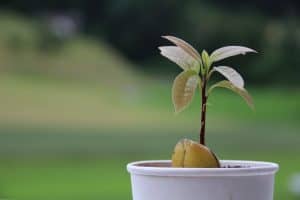 A good way to provide the avocado tree with everything it needs to be well nourished is with liquid biofertilizers.
A good way to provide the avocado tree with everything it needs to be well nourished is with liquid biofertilizers.
These have an adequate proportion of humidity and air, ensuring that the nutrients are incorporated naturally into the soil.
But in addition to that, they help the soil release the nutrients it has and the plant absorbs them without problems.
Another important feature is that it does not affect the quality of the substrate, which will allow it to be used for much longer.
To obtain about 100 liters of liquid biofertilizer, it will be necessary to work with the following ingredients:
- 25 Kg of manure from farm animals, preferably ruminants.
- 50 grams of yeast.
- 90 liters of common water.
- 3 Kg of wood ash that will be obtained by burning it without adding fuel.
- 1 liter of raw milk.
- 1 liter of molasses.
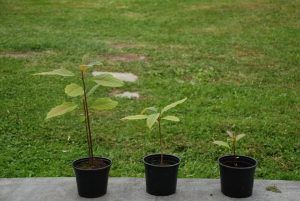 All this will be placed in a container that supports these quantities or will be reduced depending on what is needed.
All this will be placed in a container that supports these quantities or will be reduced depending on what is needed.
Mineral salts can also be added to this type of biofertilizer if necessary according to foliar and soil studies.
This mixture can be worked with both the soil and the foliage, diluting it with common water at a rate of 10 liters of biofertilizer for every 100 liters of water.
If the entire fertilization process is done properly, the result will be a large harvest of very good quality avocados.
And taking into account that they are a highly valued fruit in the market, it is much more worth working on it.
Where to buy fertilizer for avocado trees?
It is best to go to a nursery or a specialized store in your area. However, if you don’t have access to either, we might recommend these products on Amazon:
 CULIVERS Special Fertilizer for Bonsai of 5 kg. Fertilizer of 100% Organic and Natural Origin, Granulated Slow Release and controlled with NPK 8-1-5 + 74% MO and Ac. Humic
CULIVERS Special Fertilizer for Bonsai of 5 kg. Fertilizer of 100% Organic and Natural Origin, Granulated Slow Release and controlled with NPK 8-1-5 + 74% MO and Ac. Humic
- Fertilizer in the form of slow and controlled release microgranules.
- Controlled growth of new internodes
- Ecological organic fertilizer with a high concentration of NPK.
- Organic fertilizer from high-quality plant material, obtained through controlled fermentation, for a…
€19.84 View on Amazon Prices with VAT without transport
Last updated on 2022-07-26 / Affiliate Links / Affiliate API Images
 Expert Advice Citrus Organico Organomineral fertilizer specific for citrus, 5 kg
Expert Advice Citrus Organico Organomineral fertilizer specific for citrus, 5 kg
- Npk 6-5-5 contains a high percentage of natural organic substances such as corknut, hops and neem panel.
- The neem panel is a substance of vegetable origin that restores the fertility of the exploited territories and favors…
- Distributed regularly throughout the year, it guarantees complete nutrition and optimal plant development.
- Fertilization period: from March to November; Frequency: every 30-40 days; How to use: shoot, lightly bury and…
View on Amazon Prices with VAT without transport
Last updated on 2022-07-26 / Affiliate Links / Affiliate API Images
 Suinga 500 KG ORGANIC FERTILIZER FERTILIZER Humus OF WORMS, Bags of 25 Kg – 41 liters. Suitable for organic farming
Suinga 500 KG ORGANIC FERTILIZER FERTILIZER Humus OF WORMS, Bags of 25 Kg – 41 liters. Suitable for organic farming
- Organic fertilizer suitable for Organic Farming obtained from earthworm droppings.
- They help the growth and development of all kinds of plants, improving the soil and caring for the environment.
- The earthworm humus is a product of organic origin that results from the transformation of animal manure carried out…
- It serves as a substrate for seedbeds (we recommend mixing with coconut fiber)
View on Amazon Prices with VAT without transport
Last updated on 2022-07-26 / Affiliate Links / Affiliate API Images
References and bibliography
- Guide to facilitate learning in the integrated management of avocado cultivation (Persea americana Mill.).
- AVOCADO PRE AND POST-HARVEST MANAGEMENT MANUAL. MARÍA DEL MILAGRO CERDAS ARAYA, MARTA MONTERO CALDERÓN AND EDUARDO DÍAZ CORDERO.
- Avocado Cultivation Manual, by Juan León F.
- Fertilization of avocado plants (Persea americana M.) in the nursery.
- Chemical and organic nutrition in Hass avocado in Filo de Caballos, Guerrero, Mexico.

![Photo of Hyacinth Care: [Soil, Humidity, Pruning and Problems]](https://www.complete-gardening.com/wp-content/uploads/2022/08/hyacinth-care-soil-humidity-pruning-and-problems-390x220.jpg)
![Photo of Olive Fly: [Treatment, Traps and Placement]](https://www.complete-gardening.com/wp-content/uploads/2022/08/olive-fly-treatment-traps-and-placement-390x220.jpg)
